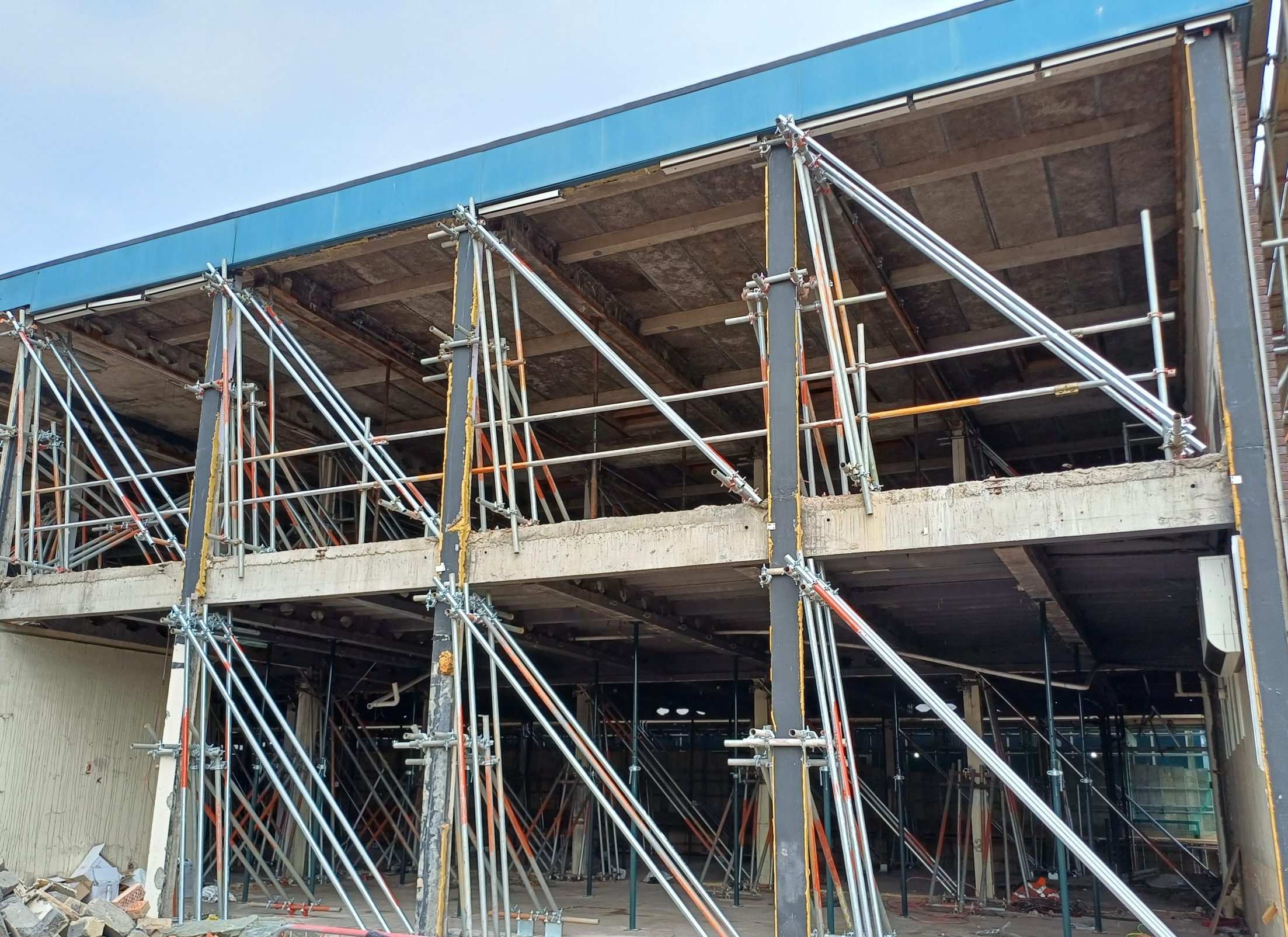Amrose Associates has been engaged by a number of main contractors to design the safe deconstruction of high risk Intergrid buildings. We have been providing specialist temporary works engineering to identify which of the defective postwar school buildings have what’s known as Intergrid system-built structure.
What are Intergrid system-built schools?
- Intergrid is one of two types of system buildings used in the construction of schools after the Second World War and until 1990 (the other is Laingspan).
- The Intergrid system was first developed in 1952 by Gilbert-Ash Limited and the Prestressed Concrete Company, for the Ministry of Education.
- This was a time of innovation in construction, to find new materials and methods when labour and materials were in short supply.
- Intergrid buildings were constructed quickly and cheaply, as a short-term solution. They certainly weren’t designed to still be in use.
- Crucially, they have potential structural weaknesses which pose a risk now they have reached the end of their lifespan.
- The structures identified as priorities in the school rebuilding programme are already showing major defects or are at risk of imminent failure and collapse.
What dangers are posed by Intergrid schools?
As well as having structural weaknesses, the frames contain widespread asbestos embedded within the precast, prestressed reinforced concrete members. This means they pose a greater risk if they collapse. It also means they cannot be demolished in the usual way.
Managing the demolition phase of the school rebuilding programme on Intergrid system-built sites involves intrusive structural surveys, complex engineering work and a planned approach to deconstruction – all of which Amrose Associates specialises in.

Specialist temporary works and deconstruction methodologies for Intergrid schools
Amrose Associates is a specialist temporary works engineering consultancy with extensive experience in defining deconstruction methodologies for complex engineering projects such as Intergrid Schools.
Our role includes:
- Carrying out structural surveys
- Defining deconstruction methodologies
- Designing temporary building bracing systems for safe site clearance.
- Site supervision and inspection services

Our knowledge of Intergrid systems
One of the challenges with these projects is that, generally, very little is known about the Intergrid systems, how they were built and what materials were used.
We are one of the few engineering firms that has a deep understanding of Intergrid and the construction methods used. One of our current projects, for example, appears to use a type of Intergrid system first developed in 1959 which typically has primary beams with either pre-tensioned monolithic components or segmental units with internal steel ducts carrying the prestressing tendons. We have a good understanding of how these were installed on site at the time and the typical segmental configurations.

Experts in complex engineering
Even with this extensive background knowledge, the structural survey stage is painstaking as we gather data and understand exactly what we are dealing with in each case.
Once we have that data, we can use our structural engineering skills and construction experience to plan a systematic and safe deconstruction process.
Safe deconstruction prevents the uncontrolled, progressive collapse of the structures and the potential release of asbestos fibres into the atmosphere. If this process isn’t meticulously planned, there is a risk of progressive disproportionate collapse, given the unstable, ageing and unpredictable nature of the system-built blocks.
Thankfully, our engineers are some of the best in the business, which means those managing the huge task of remediating the UK’s postwar schools know they are in safe and experienced hands.
If you have a complex engineering project you’d like to discuss, call our team on 0113 418 0694

